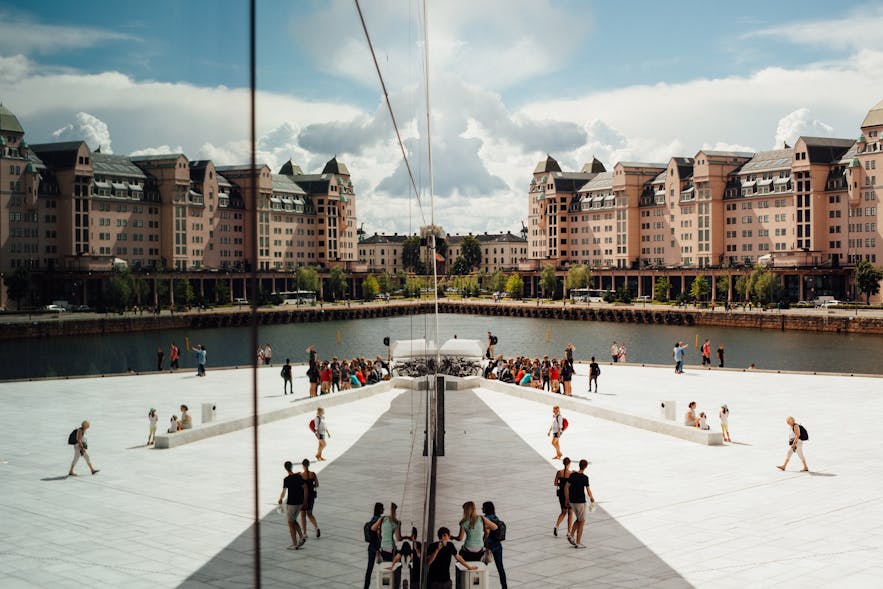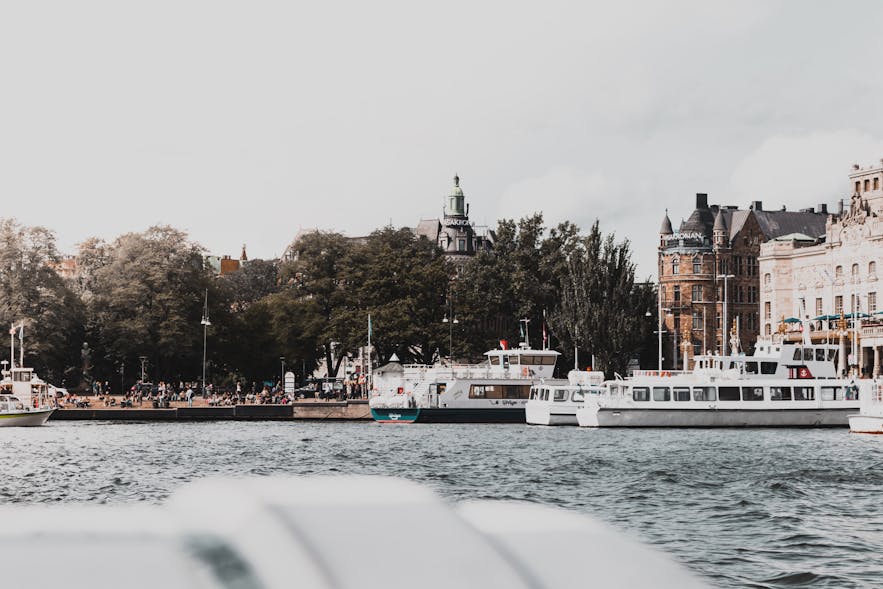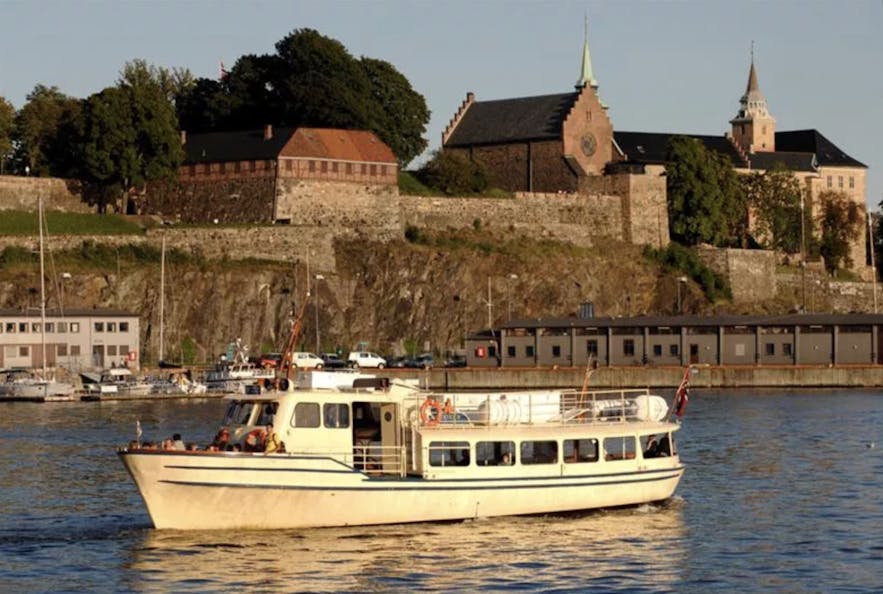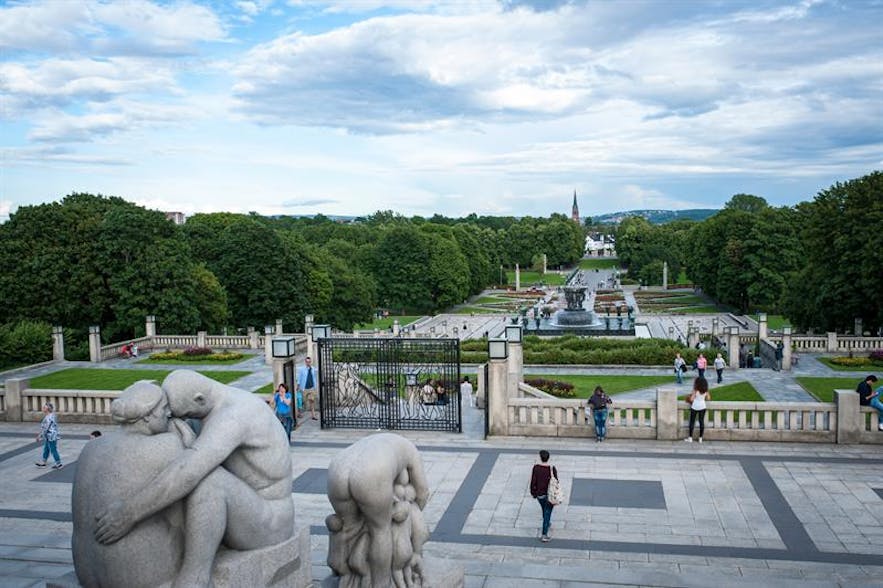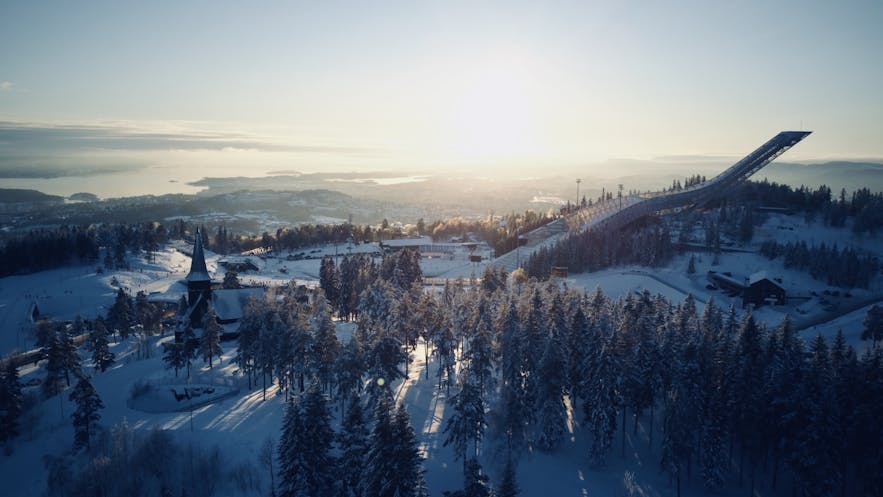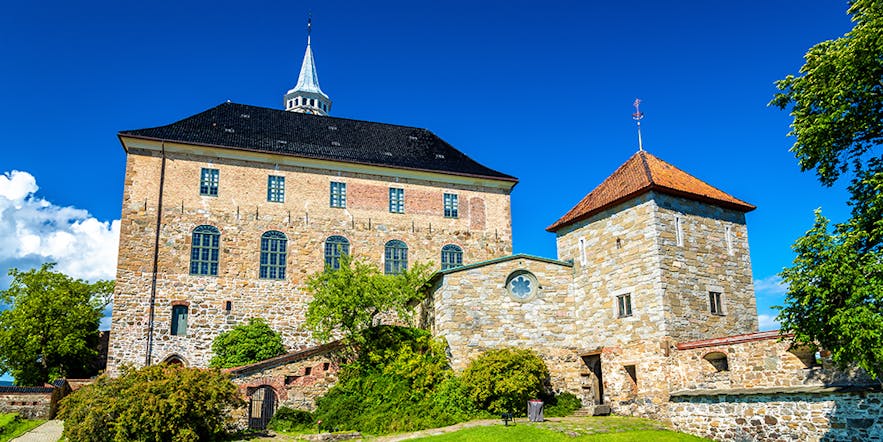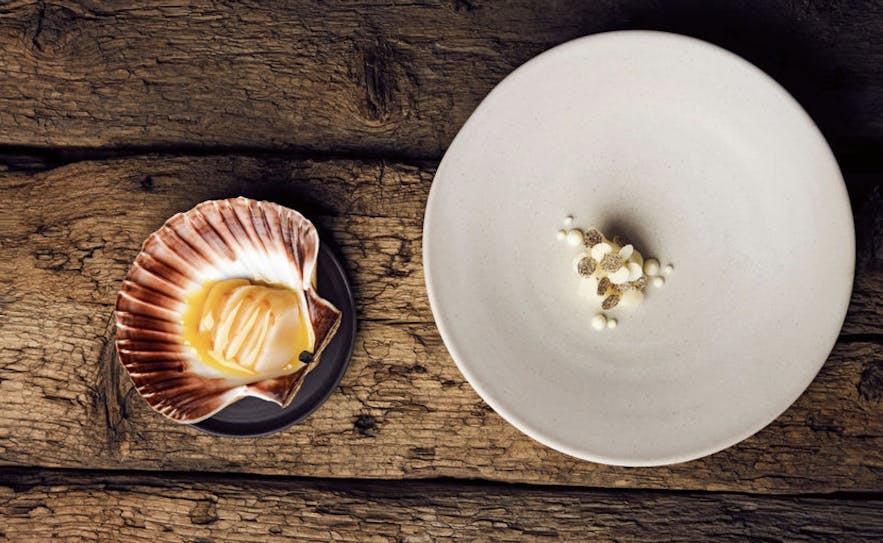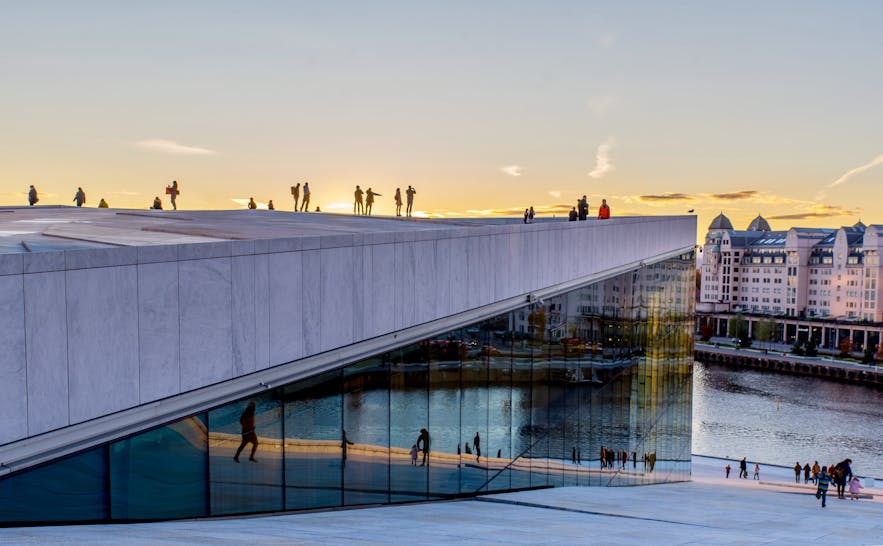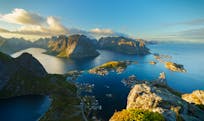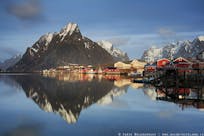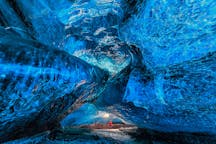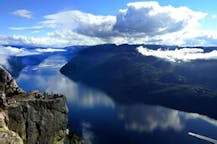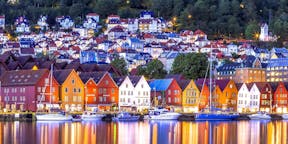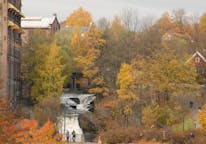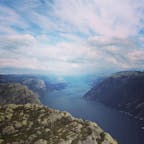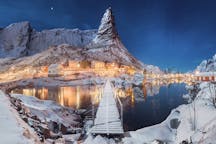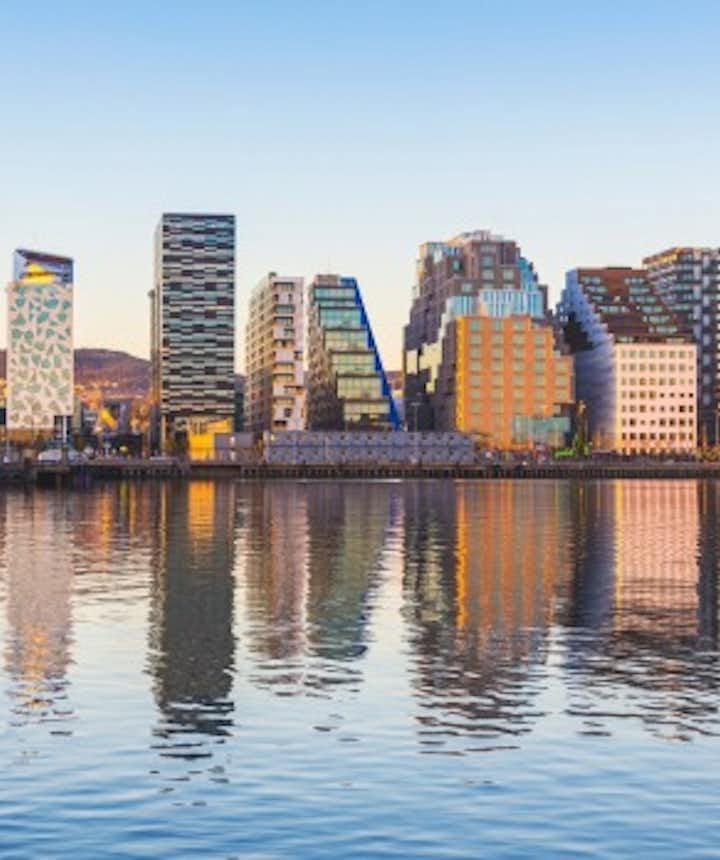
Ultimate Guide to Oslo | City Guide You Need Before You Go

- Getting Around in Oslo
- What to Do - Oslo by Boat
- What to See - Oslo Sculpture and Architecture
- What to Visit - Holmenkollen and Museums
- Where to Stay
- Oslo Pass and Transport Ticket
- Visit Oslo on a Budget
- What to Pack for an Oslo Holiday
- Oslo Food and Drinks
- When to Plan Your Oslo Trip
- Oslo Holiday Travel Tips
Oslo is one of the most beautiful cities in the world, but when should you visit to make the most of its climate and prices? Which destinations will liven up your Oslo holiday the most? Which tours deliver the best thrills? And which dishes represent Norwegian gastronomy best? We have the answers. Keep reading and book the perfect tour for your interests.
As a hub of architectural innovation, architects have been inspired by Oslo and placed this city in a certain place in their hearts. You needn’t love architecture as an art form to marvel at its heritage. The city is surrounded by ocean and mountains, and its passion for invention leaks into its cultured, irreverent way of life.
If you’re planning an Oslo holiday, you’ll get the opportunity to tread the same paths Edvard Munch once did, but the city celebrates contemporary art equally well. You can find out what inspired the famous Norwegian-noir writers, Jo Nesbo and Anne Holt.
Oslo was once the stomping grounds of Vikings, but it soon became one of the world’s most interesting art capitals. Its museums cover both Medieval times and contemporary eras. The capital is an innovative one, and you’ll see that spirit in everything from its entrepreneurial heritage to its extraordinary gastronomy and opera
Regardless of how, don’t forget to immerse yourself in its culinary scene, which has become so famous it’s turned Oslo into a culinary destination for the most passionate of foodies. After the sun goes down and your appetite is duly sated, its nightlife awakens in glistening Technicolor. This is the most multicultural of cities, and it welcomes you.
Getting Around in Oslo
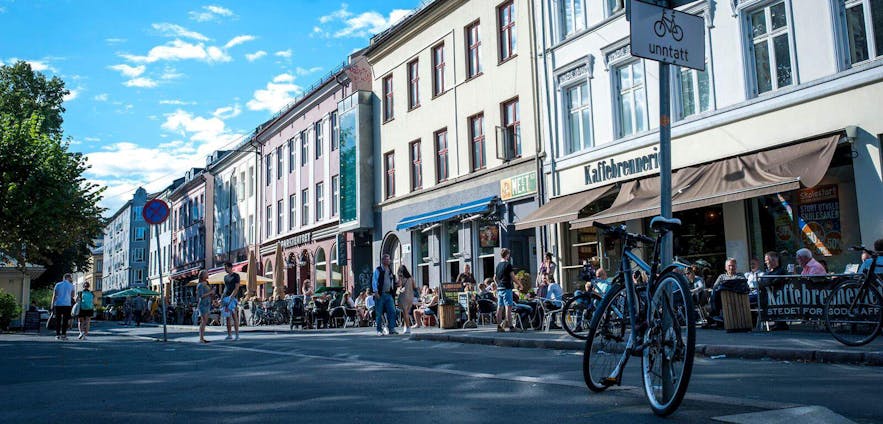
After you deplane at Gardermoen Airport, there are several ways for you to get to Oslo. You can try the car rental service, which you will find several different rental companies at the airport. Or, enjoy the fastest way to downtown by Flytoget. Another public transportation is by Oslo Rail, which is also an environmentally friendly way to go for.
When getting to the city, make Grünerløkka as the first stop. This was once an industrial area, but it’s become Oslo’s trendiest arts spot. It’s home to several art schools, so it’s populated with a range of contemporary art galleries and bars. You’ll get to see global art talent and sample unusual tastes at the Mathallen food market. The riverside walkway is perfect in both summer and winter.
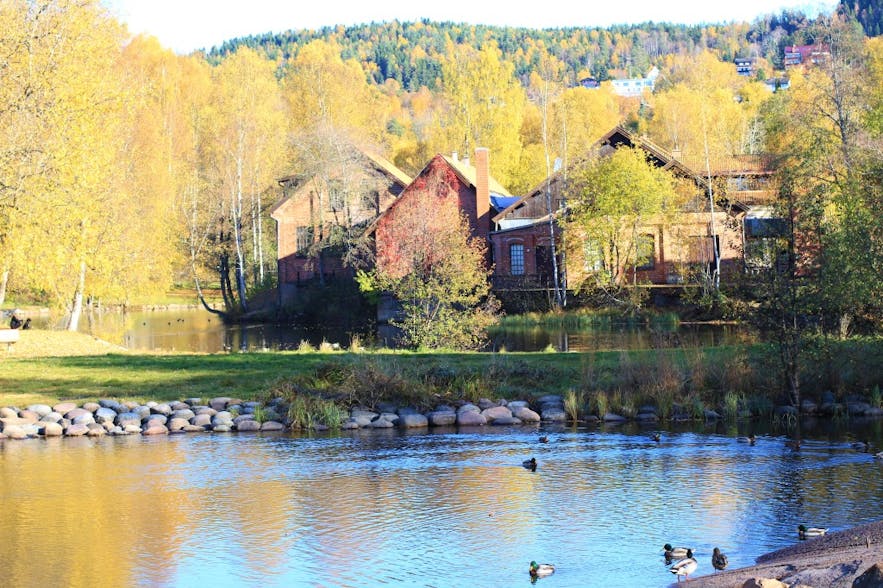
The Akerselva River runs through the center of Oslo, starting from Maridalen and carrying you past the Opera House, Frogner Park, and Grünerløkka. Once the sun sets, stop by at Torggata Botaniske, an unusual botanical bar that’s renowned for its plant-lined walls and impressive cocktail menu. This is the perfect place to try out botanical-laced cocktails and local wines. You’ll feel as though you’re inside a forest, and the ambiance is a global phenomenon.
What to Do - Oslo by Boat
The Oslofjord Sightseeing Boat Tour will carry you to most of Oslo’s most important destinations, from The Viking Ship to the Fram Museums. Hovedøya is a nature lover's paradise and is nestled along the rocky island of Langøyene, where you'll spot breeding waterbirds and pristine vegetation.
The boat trip will take you to Oslo Opera House, which plays the starring role as an architectural centerpiece. It hosts contemporary opera such as The Magic Flute alongside jazz festivals and workshops. If it’s ballet or modern dance your favour, you’ll find it there, too. It hosts enough performances to keep you entertained throughout the week.
What to See - Oslo Sculpture and Architecture
If you love sculpture and architecture, the Vigelandsparken presents the work of Norway’s famous Gustav Vigeland. There are a total of 212 sculptures in its exhibit, including his famous Sinnataggen. The emotive sculpture park was first planned in the Twenties, with its many artworks being connected by a riverside pathway with its own enormous fountain. It hosts a 20-meter obelisk, which is perhaps its most pronounced feature. Once you've strolled through the park, stop by the Munch Museum, which has a 28,000-strong collection of Munch’s works.
Oslo Cathedral is an impressive 17th-century church that was constructed in the late 1600s. It was restored in the fifties, and its baroque interior is well worth viewing on your Oslo holiday, particularly during one of its many concerts. No tour is complete without a trip to the Rådhuset, which hosts The Nobel Peace Prize Ceremony every year. And if you want to feel som royal vibe, the Royal Palace is open to visitors every Summer.
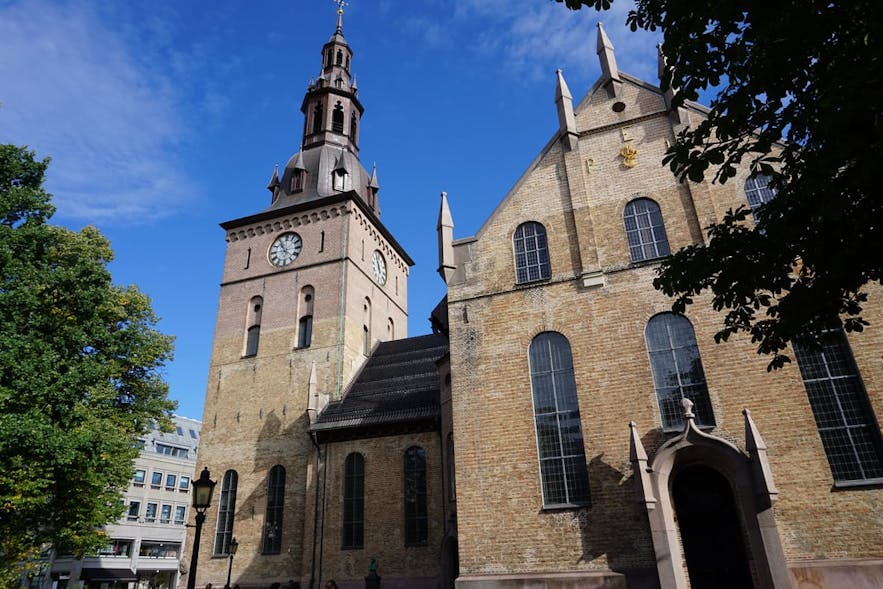
What to Visit - Holmenkollen and Museums
For people who want to have great views over Oslo and Oslofjord, Holmenkollen is definitely ideal and a must visit. Holmenkollen, the ski jump tower is Norway's most visited tourist attraction and one of the world's most famous sports arenas and the ski museum is the world's oldest museum specializing in skis. The ski museum, which opened in 1928 and exhibits over 4000 years of ski history. and its cross-country area has a breathtaking elevation of 325 meters. Taking the lift all the way up a magnificent view of Oslo and the Oslo Fjord. For those seeking a more adrenaline filled experience, there’s a zip line from the top of the hill all the way down to the tribune.
Bygdøy Peninsula is the place for you if you are going to get yourself filled by museums. It boasts a total of five museums. A tip to remember, Oslo Pass will cover all your museum and transport costs.
-
Kon-Tiki Museum
-
Norwegian Museum of Cultural History
-
Viking Ship Museum
-
Norwegian Maritime Museum
-
Fram Museum
The Kon-Tiki Museum has an 8000-book library and an adventurers’ museum, replete with the vessels and maps from the Kon-Tiki exhibition. You will learn about the explorer Thor Heyerdahl. He is famous for having crossed the Pacific Ocean in only a balsa wood raft in 1947. That raft, known as the Kon-Tiki, is on display in the museum. You'll also learn about Heyerdahl’s exploration of Easter Island, the Galapagos, and Fatu-Hiva, and how his work impacted geographical knowledge at the time.
The Viking Ship Museum exhibits archaeological finds from the surrounding regions of Oslo. This fascinating museum is dedicated to the history of Norwegian maritime adventure in the time of the Vikings. It is home to some of the best preserved Viking ships in the world. During your visit, you will discover the unique stories of three Viking ships.
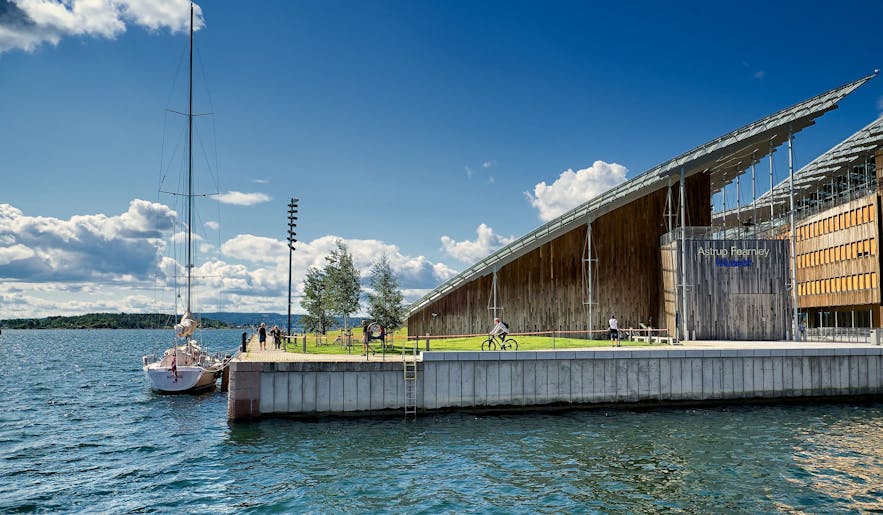
The Astrup Fearnley waterfront museum is a work of art in itself but is also home to an international and contemporary art exhibition. It is not located in Bygdøy Peninsula, it's gorgeously set against the Oslo Fjord and hosts one of the largest Norwegian modern art collections. It was constructed to blend in with the Oslofjord landscape. Its exhibits include works by Jeff Koons, Tom Sachs, and Richard Prince. Its contemporary artists include Ansel Kiefer and Sigmar Polke. The gallery is careful about the art it exhibits, so you won’t find many spurious or pretentious collections within its halls. It opens at 12 and closes at 17:00, so make sure you’re at the door at noon. You’ll need every minute you can spare.
At a Glance - Akershus Fortress
Akershus Fortress was constructed to protect the city, but it’s been modified to include a military installation. It’s worth a visit for its medieval history and sprawling grounds alone, but no history tour is complete without a guided trip and musical recital. The fortress was built by King Haakon the Fifth and became home of Princess Margaret of Denmark in 1363.
Not long afterward, it was turned into a cheerful renaissance home. In the 19th century, it was used as a prison known for its slave labour. It was ultimately restored and now includes a Norwegian Resistance Museum to celebrate the Norwegian fighters of the Forties. It remains one of the best spots for viewing Oslo Fjord, and it even hosts concerts and dinners at its own private restaurant.
Where to Stay
The city has accommodation along the waterfront, in the city center, and nearby Vigeland Park. Oslo is a relatively small city, so any central hotel will support your transportation routes.
-
Aker Brygge: If water soothes you, these previously rundown dockyards have been upgraded, turning the area into one of Oslo’s trendiest. It’s a short distance from the city center and is close enough to the highway to support a cross-country tour. Aker Brygge has a number of galleries and canals, so take the opportunity for a sunset stroll.
-
Majorstuen: It is close to Vigeland Park, but as one of Oslo’s trendiest neighborhoods, it’s a little more expensive than other parts of the city. Even so, it has some affordable accommodations and is close to major public transport routes.
-
The Frogner District: It is one of the city’s best established, and it’s home to the upper crust of Norwegian society. It’s a quiet area near to the exquisite Frognerparken. Those on budget trips will find affordable shared accommodation in the Frogner District's many apartment blocks or through Airbnb listings.
-
Grünerløkka: It is Oslo’s most culturally disparate region. It attracted droves of immigrants in the eighties and has thus become an internationally relevant region with a decidedly bohemian flair. This is where some of the city’s trendiest restaurants and bars can be found. It’s a youthful area steeped in Millennial culture.
-
Akershus County: Consider a bed and breakfast or hotel along the Fjord on Asker road in this municipality. Each morning, you’ll be able to stroll to the public library and station.
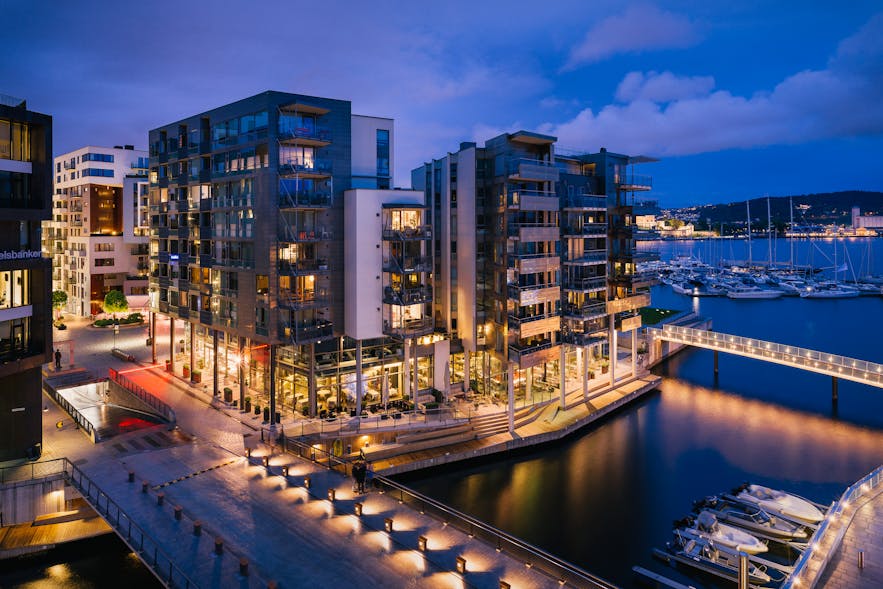
Oslo’s hotels are well-priced. You won’t need to pay more than you would in any UK or US city. It has a thriving Airbnb market, but if you’re looking for a truly unique experience, The Thief and Clarion Collection Hotels are among the most original. The Solbakken and Hotel Continental are expensive but top-rated. Wi-fi, 24-hour front desk, free breakfasts, and paid public parking are typical of the best hotels in the city. All but one Oslo hotel are smoke-free.
Oslo Pass and Transport Ticket
Oslo is a small city with a well-developed public transport system. It won’t take longer than half an hour to travel from its center to the city outskirts by bus or tram. Public transportation is usually on time. The Oslo Pass gives you unlimited free bus and tram travel as well as entrance into the city's museums and galleries. It can be used on the boats to Bygdøy, but not to Oslo Gardermoen Airport.
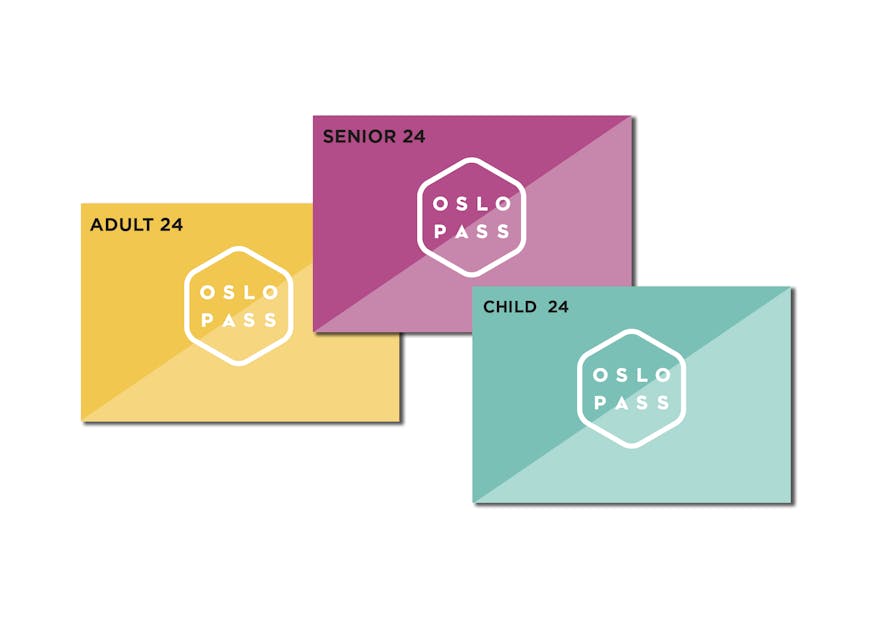
A one-month Ruter transport ticket will cover your costs at a pocket-friendly price, but make sure you choose the one or all-zone option that suits your needs best. The city has the second most expensive taxi tariff in the world, so a monthly ticket will bring down your holiday costs significantly.
Visit Oslo on a Budget
Oslo falls in the center of Europe’s beer index, and its hotel prices are generally affordable, with overheads that equal any world-class destination. It has several free tourist hot spots, and you can expect to pay about 250 NOK ($28) for a meal. The city’s coffee scene is raging right now, with prices that are comparable to Starbucks despite an impressive upgrade in quality. A Ruter monthly public transport ticket will set you back about 750 NOK ($85).
What to Pack for an Oslo Holiday
Even if you’re travelling in summer, you’ll need a jacket and jersey. The weather is unpredictable, which makes for some challenging packing. Spring, autumn, and winter can be chilly and windy, so a lightweight windbreaker is a must. Wintry weather requires ski wear, scarves, and thermals. A heavy coat and walking shoes will keep you comfortable on long winter hikes. Oslo medications are expensive, so fill your prescription before you leave. European over the counter medications often require a script in Norway, so add your OTC medications to your luggage and pack a written doctor’s prescription for them.
Oslo Food and Drinks
Oslo is passionate about fresh ingredients, and no wonder, given its many Michelin restaurants. Chefs grow their own ingredients, even for their garnishes, so you can expect a passionate approach to food. Here is the list of the most recommended restaurants and cafes in Oslo.
-
Maaemo is a place for you if you enjoy fine dining. Maaemo is the only three Michelin star restaurant in Norway. In addition to the seasonal Norwegian cuisine, Maaemo focuses on the harmony by highlighting raw and cooked ingredients along with the culture and history of Norway. Chef Esben Holmboe Bang created a menu entitled “A Journey through the Norwegian Landscape.” Isn’t a must try when visiting Oslo?
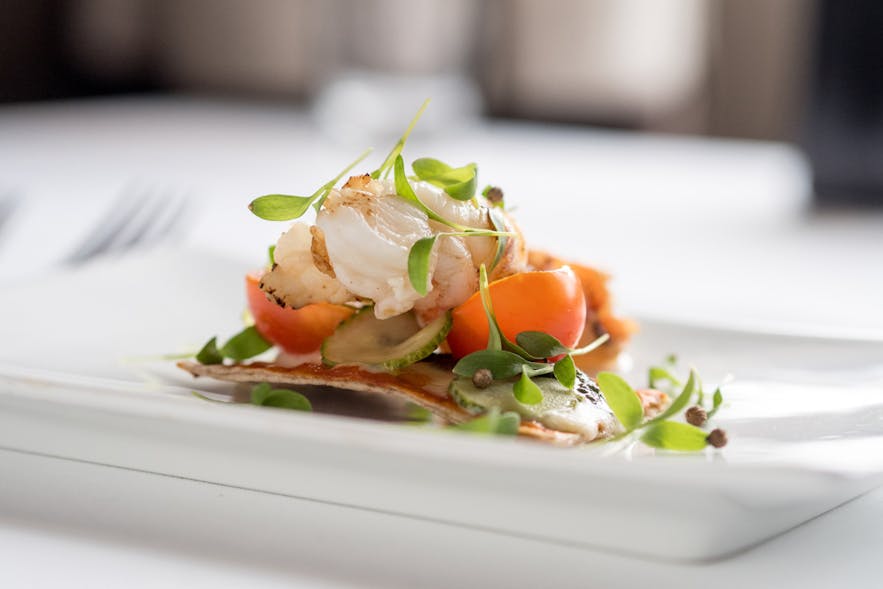
-
Hos Thea is another restaurant that has numerous awards, which is located in a 100-year-old butcher shop in Skillebekk. The chef and owner Sergio make sure all the customers will taste the seasonal dishes, such as homemade crayfish ravioli and deer with blueberry sauce. How about having a glass of wine and enjoying this creative cuisine in an intimate place like Hos Thea?
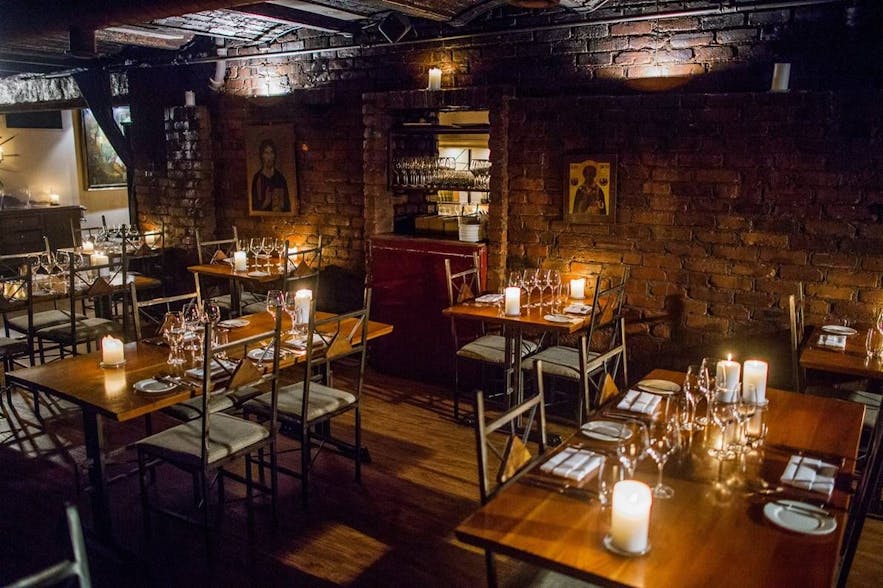
-
Klosteret Restaurant let you dining in the building that was built in 1899. Klosteret Restaurant insists on only use ingredients supplied by local farmers and artisans. Here, Norwegian and European fine dining is what you expect to have. Organic salmon with asparagus, trout roe & dill foam, and veal with sweetbread & cabbage. Try all of these in the candlelit space of exposed brick walls and arches.
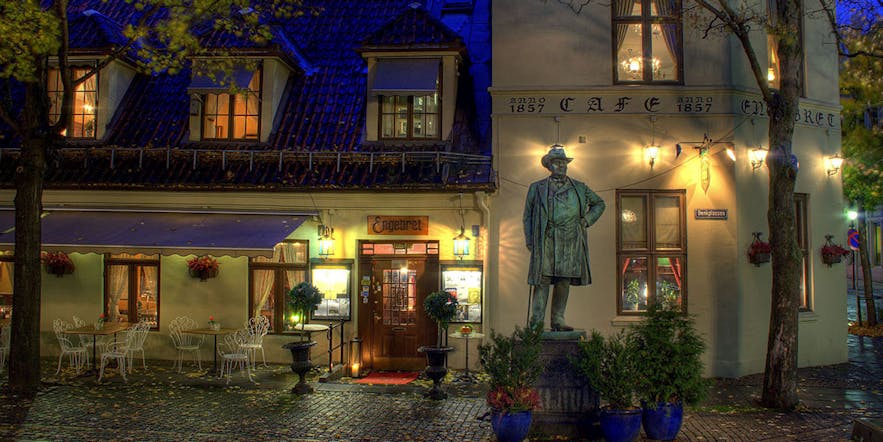
-
Engebret Café is the local institution among gourmets. This is also the oldest restaurant in Oslo in a building from the early 1700s. Within the historic neighborhood of Kvadraturen, you will find “Engebret Cafe’”. This restaurant dates back to 1857 and provides guests the opportunity to experience traditional Norwegian cuisine. Dishes include reindeer carpaccio with grilled goat cheese and cured herring with potato salad. Even Edvard Grieg and Edvard Munch were one of the guests.
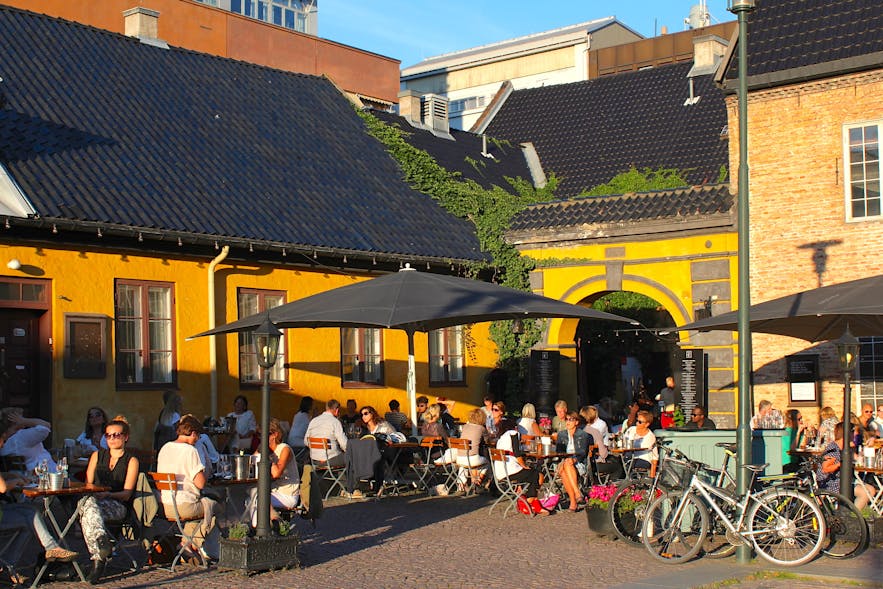
-
Kafe Celsius offers a cup of black coffee with a vanilla marinated strawberry dessert sound like something everyone wants to have on a cozy afternoon. Kafe Celsius, in addition to outstanding dessert and coffee, is located in Christiania Square, which is surrounded by some of the oldest buildings in town. This is a perfect place for you to sit down and enjoy a peaceful moment in Oslo and recharge for your next adventure.
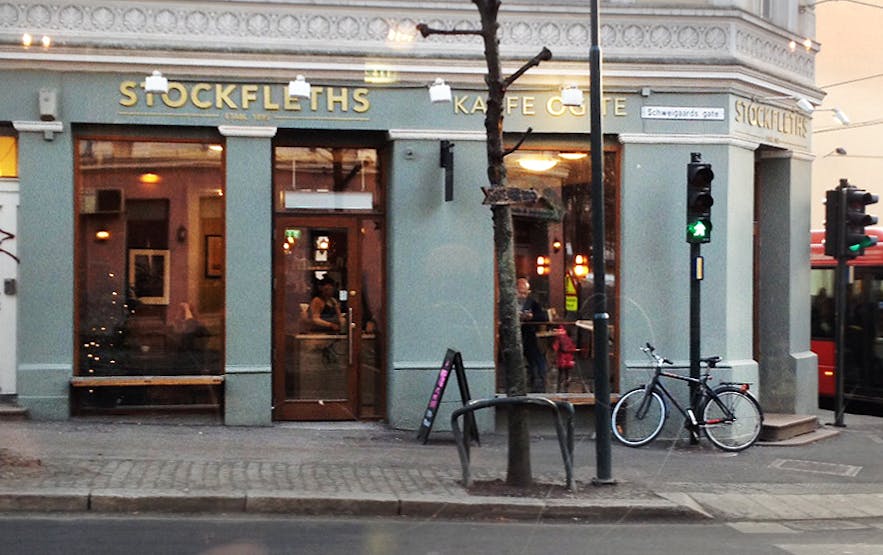
-
Stockfleths let us go back to 1895 when the first Stockfleths opened. Almost 120 years old, Stockfleths has helped characterize the new Norwegian coffee culture as we know it today. Nowadays, the chain has been expanded to greater Oslo. You don’t need to go back in time to taste the amazing brew from Stockfleths.
When to Plan Your Oslo Trip
Norway’s climate is mild but unpredictable. It experiences snow along the coast, with chillier weather in its inland regions.
-
Norway’s climate is mild but unpredictable. It experiences snow along the coast, with chillier weather in its inland regions.
-
In summer, temperatures rise to an easy 18 degrees Celsius.
-
If you’re visiting for the region’s natural heritage, Oslo's landscape breaks into sparkling colour between May and June.
-
June and August bring midnight sunshine ideal for cycling or hiking tours.
-
The two periods when the city attracts the fewest tourists is between September & October. So if you favour quiet roads and fewer clicking cameras, that's your best season
-
Skiing is at its best during March, and the snowy sport gives you a pocket-friendly way to enjoy the region.
-
If you're planning a hiking or cycling holiday, summer is the best season for you.
-
Tourism season happens from May to August when the weather is chilly but sunny. This is the most expensive time to visit the city.
-
December is the rainy season, with as many as 28 days of precipitation, so if your visit falls on Christmas, book a car or travel by Uber.
Oslo Holiday Travel Tips
-
Oslo is a tourist-friendly destination with economical tours and free guides.
-
You’ll need a two-pin adapter for your gadgets. The city uses the Europlug Type C&F.
-
To bring some cash may be wise but not necessary. Cash will be around in most societies for many decades; however, some nations are already well on the road to going entirely cash free. One of these nations is Norway.
-
A wide-angle lens and polarizer will adapt your camera to Oslo’s sunny landscapes.
-
If you book your bus tickets before you land, you can usually secure tickets for half the price of last-minute offerings.
-
Oslo’s Uber services are far cheaper than taxis, so they’re the best way to get around. The service has share rides via the UberPool option for a truly pocket-friendly alternative.
-
Oslo’s recreational and museum areas are tightly packed together, and if you take a boat to Bygdoy from Pier 3, you’ll be able to cover several destinations at once.
-
One entry fee will give you access to Norway’s biggest art exhibit as well as a large collection of museums.
-
You can travel with Panorama tour which will carry you to the Holmenkollen Ski Jump and Museum. There are spectacular hiking trails in the area. You can do a little island-hopping at your destination on the local ferries.
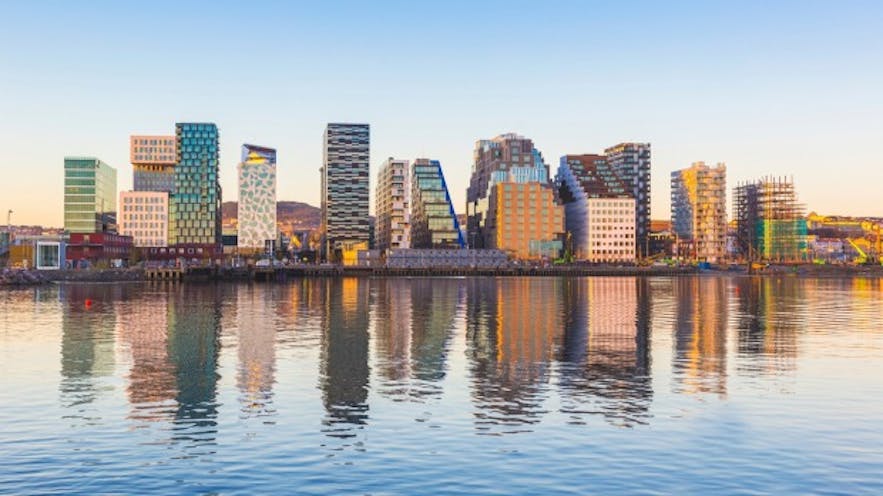
National Geographic calls Oslo “The Queen of Nordic Cool,” and no wonder. As one of the trendiest capitals in an already edgy country, it delivers a wealth of contemporary culture. It’s known as one of the most expensive capitals in the world, but with a little forethought, you can craft an affordable itinerary. To book a tour that's crafted to include the city's most glistening destinations, check availability by choosing a date now.
Other interesting articles
5 Must See Museums in Oslo
Oslo has defined itself as an artistic hub in Scandinavia with its wide variety of museums. From sculptures of naked people to arctic history, Norway’s capital has something to offer for anyone. Here...Read moreThings to do in Bergen | Bergen's Best in One List
Get ready to experience one of the most enchanting cities in Europe! Bergen sits nestled between glimmering fjords and towering mountains on Norway's southwestern coast. As a UNESCO World Heritage Cit...Read moreA Guide to Bergen
Norway’s second largest city is situated on the west coast, and its charming, small town feel is enhanced by the seven mighty mountains that act as its natural enclosure; not to mention the breathta...Read more
